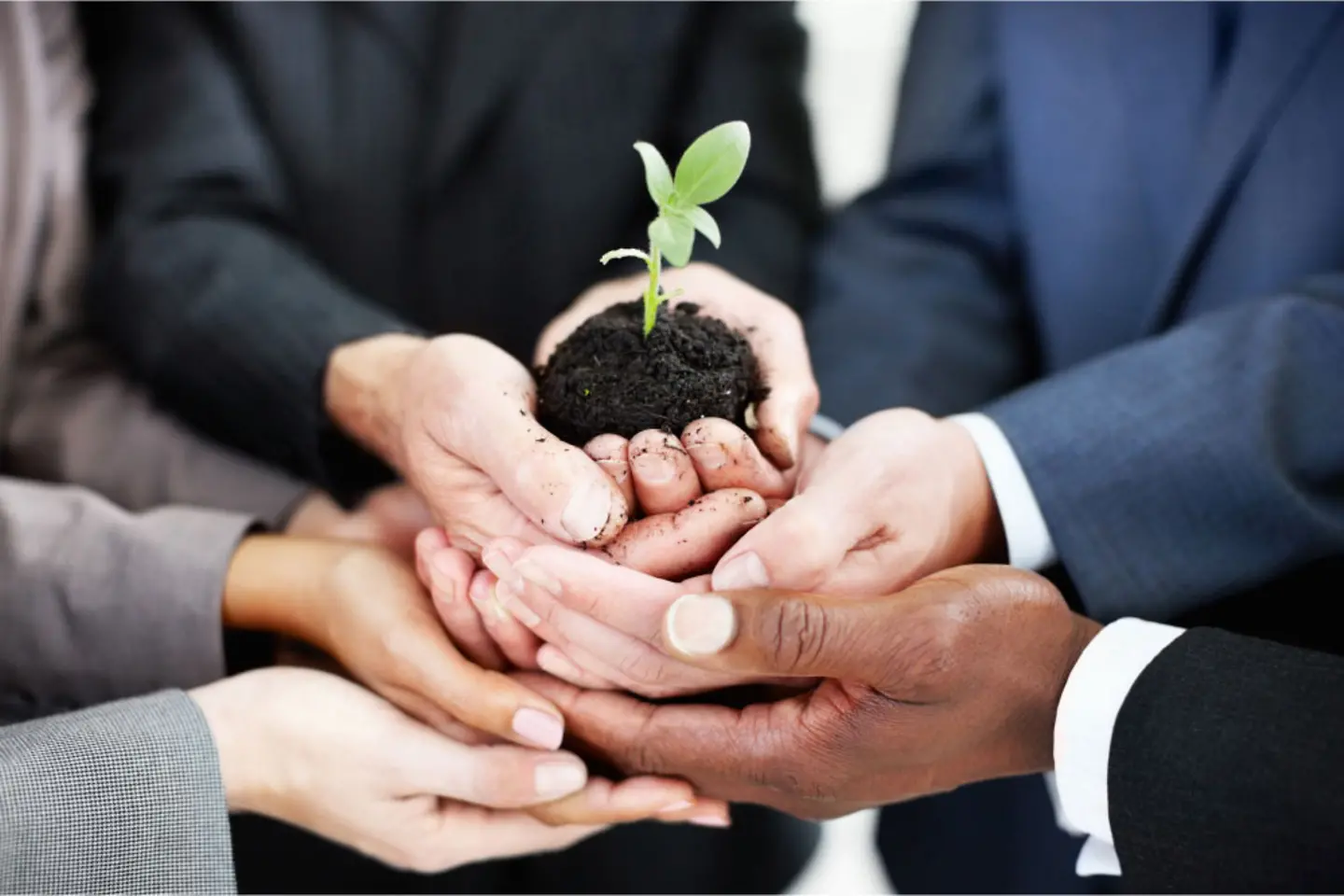
“We are not only responsible for what we do, but also for what we leave behind.” I pulled this phrase from a fortune cookie on New Year’s Eve, and this is what inspired me to write this blog post. This is because if we want to use digitalization to facilitate sustainability, there is much more to it than the effective use of innovative technologies. The decisive factor is to bear sustainability in mind across the whole system and from the beginning – this is how we take responsibility.

One thing is clear: Companies urgently need to proceed with their digital transformations and become more sustainable at the same time. This concerns environmental topics as much as social issues and company management questions. Companies carry a particular responsibility for the implementation of the Paris Convention. It stipulates that the global economy needs to reduce its emissions by more than 42% by 2030, more than 72% by 2040, and by more than 91% by 2050. Those who wish to meet the expectations of employees, customers, and investors need to focus on a complete transformation and use digital innovations for improved sustainability. But who are actually “companies” and “business”? All of us – every single employee, no matter in which function and at which level.
There are three essential elements to a sustainable digital transformation:
Digitalization can protect the climate and the environment if we design digital solutions in a sustainable way. To do this, companies need to focus on sustainable design from the start and consider sustainability concerns as an intrinsic part of all processes. It starts at the beginning: with the development processes and basic processes. With digital solutions, we can already keep harmful emissions to a minimum or even avoid them altogether. At the same time, digital technologies can be used to plan, control and check measures for greater sustainability. For example, digitization can save up to ten times more energy than it consumes. How we can combine sustainability and cloud transformation is well described in this blog. It shows that climate targets cannot be achieved with yesterday's technologies.
Gartner counts sustainable technologies among the ten strategic trends of 2023. The market researchers consider these to be solutions that increase the energy and material efficiency of IT services and make it easier for companies to implement ESG criteria. This includes technologies like artificial intelligence, automation, data analytics, and cloud computing services that help conserve resources, clarify needs accurately, and monitor potential risks. Like minimizing raw material shortages, production shutdowns, or transport blockades in the supply chain, for example. High-quality data form the basis of the use of these technologies and of active and contemporary sustainability management. This is why many companies need to improve their databases and analytical capabilities by connecting technologies. Especially in terms of data, the following rule applies: “Garbage in = garbage out”. The quality of data is and will continue to be more important than the quantity.
Data creates the transparency we need to analyze and improve our current processes. After all, the more insights companies have about how products, systems or services work, the easier it will be to optimize them and drive sustainability. Data also provides the basis for innovations and new business models. The availability of sufficient high-quality data, for example to train the AI algorithm, is a prerequisite for this. After all, AI has the potential to increase ecological sustainability if the sustainability concept is already taken into account during the initial setup and continuous further development. In this way, AI can become “Green AI” and find application in many areas such as urban planning. For example, the Spanish city of Gijón has become a smart city.
Innovative technologies are increasingly being used for intelligent urban planning and management. For waste separation, for example: With cameras and sensors, intelligent waste sorting robots can cleanly separate materials with an accuracy of 98% and contribute to better recycling. Or also for fiber-optic network expansion. With the AI-based process in the Open Telekom Cloud, expansion costs can not only be calculated much more accurately but also in a quicker and more scalable way than before. Through automated planning, the planning period can be reduced to 75 percent. But how can all of these measures be visualized, measured, and monitored? With the SDG Dashboard “Syrah Sustainability” from T-Systems, all public and private organizations can keep an eye on their sustainability indicators. The aggregated information forms a good basis for making decisions.
You can display all external content on the website at this point.
I agree that personal data may be transmitted to third-party platforms. Read more about this in our privacy policy.
Syrah Sustainability, a configurable Sustainable Development Goals Dashboard, enables all public and private organizations to define, visualize, measure and monitor sustainability indicators.

Innovative technologies can then demonstrate an impact when they are used correctly – and here employees play a key role! In a sustainable transformation, the CIO and their team adopt a “double role”: They facilitate Green IT by choosing sustainable digital solutions. In this way, they contribute significantly to improving the whole company’s impact on the climate and environment. As well as this, the IT team facilitates the digitalization of products, services, and processes with data-driven approaches. From transparency and control to the adaptation of business processes. This improves the efficiency of resources and energy and reduces carbon emissions. And outside of the IT department, it is not just a case of implementation, but also of ideas and initiative, which is a focus across the company. Employees are the key to more sustainability. How companies can create a more sustainable working life-style was already discussed in my previous blog.
…to be sustainable? Smart technologies alone are not enough. It is clear that without global standards, and guidelines, as well as transparency and comparable data, it will be impossible to identify status or fields of action. It has long been a matter of urgency to act more responsibly and use resources more efficiently and sparingly. And digitalization forms the basis for a complete transformation. It presents an opportunity to focus comprehensively and profoundly on sustainability and to completely switch over to it. Where we are or used to be wasteful, a change of thinking to adopt the approach of “less is more” should be easy. But we need to tackle and change the whole system. It is time to rethink and to act – as the future depends on what we do today.
What is stopping us from being sustainable?
PS: What will inspire your 2023?